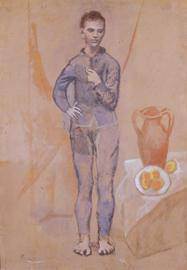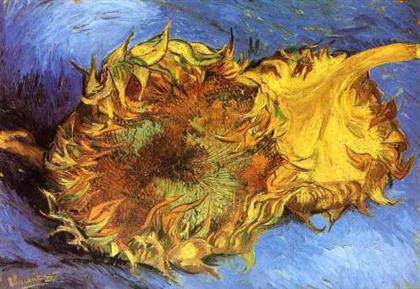
Pablo Picasso, Juggler with Still Life
Paris, autumn 1905
gouache over graphite on cardboard
National Gallery of Art, Washington, Chester Dale Collection, 1963
Reinventing Tradition: Picasso’s Drawings in Washington Through some 60 works, Picasso’s Drawings, 1890–1921: Reinventing Tradition presents the dazzling development of the artist as a draftsman during the first 30 years of his career, from the precocious academic exercises of his youth to his radical innovations of cubism and collage.
January 29–May 6, 2012.
]]>
Source: National Gallery of Art, Washington
Picasso’s Drawings, 1890–1921: Reinventing Tradition presents a diverse selection of works on paper arranged chronologically, from early academic studies and life drawings to preparatory drawings for paintings, major independent and finished drawings made for sale, and portraits of family and friends in all media.
The son of a drawing instructor, Picasso began to sketch at an early age. The exhibition opens with a selection of the most accomplished drawings from his childhood, including Hercules (1890)—his earliest known drawing. The lessons learned in this period, as well as exposure to the art academies of A Coruña, Barcelona, and Madrid, and to old masters in the Prado, stayed with Picasso throughout his life.
Picasso’s move to Paris in 1904 coincided with rising public access to works on paper by old master and 19th-century artists through museum exhibitions and new means of reproduction. Inspired by Ingres, Toulouse-Lautrec, Gauguin, and Degas, as well as Greek, Roman, and Egyptian antiquities, Picasso produced virtuoso drawings as independent works in a variety of materials (pen and ink, charcoal, pastel, watercolor, and gouache) and subjects (the couple, mother and child, and the harlequin family), for example Juggler with Still Life (1905).
The exhibition showcases the way in which Picasso (with Georges Braque) devised new approaches in drawing that culminated in cubism and collage—the most critical development in his career and arguably in the 20th century. His interest in ancient Iberian art led to geometric stylization in visions of his mistress Fernande Olivier. In studies of individual figures, such as Yellow Nude (Study for Les Demoiselles d’Avignon) (1907), he revealed his thought processes as he progressively rendered the human figure more abstract.
During World War I and immediately following, Picasso balanced tradition against innovation, embracing both classical modes and the cubist approach to representation. In portraits and images of bathers and figures, the artist rendered his subjects in spare contour drawings—for example, The Bathers (1918)—and in carefully executed sculptural drawings of the face and body, as in Portrait of Madame Georges Wildenstein (1918).
The concluding works in the exhibition are from the summer of 1921, when Picasso and his wife Olga Khokhlova and baby Paulo were staying at Fontainebleau. Head of a Woman and Woman in a Hat Holding a Missal are pastel and charcoal renderings of monumental female figures, reflecting Picasso’s deep interest in the classical Mediterranean tradition.
Related content
MOMA presents ‘Picasso: Themes and Variations’ (exhibition, 2010)
Follow us on:


